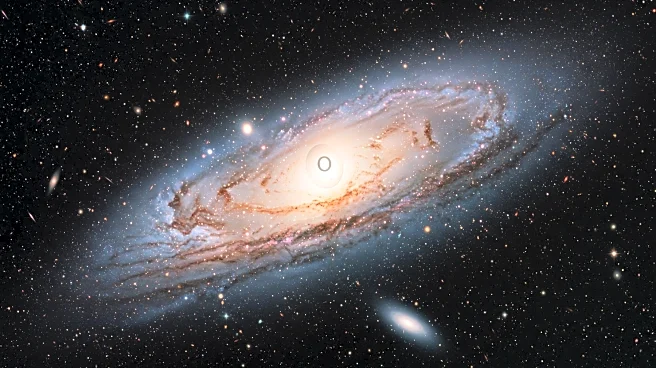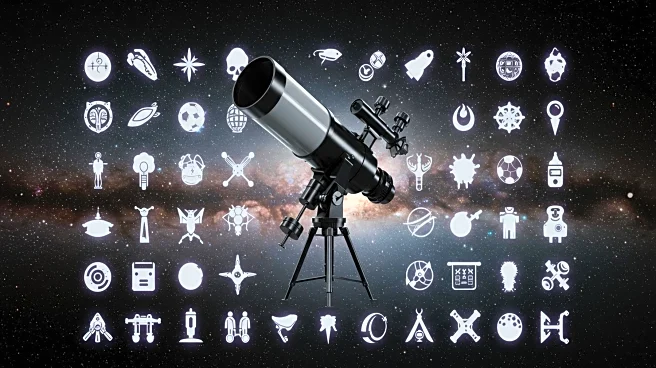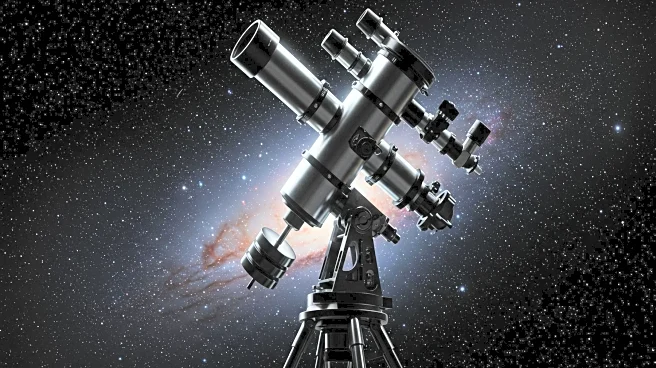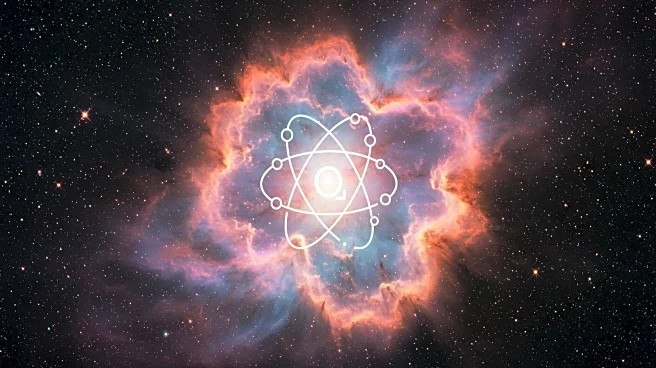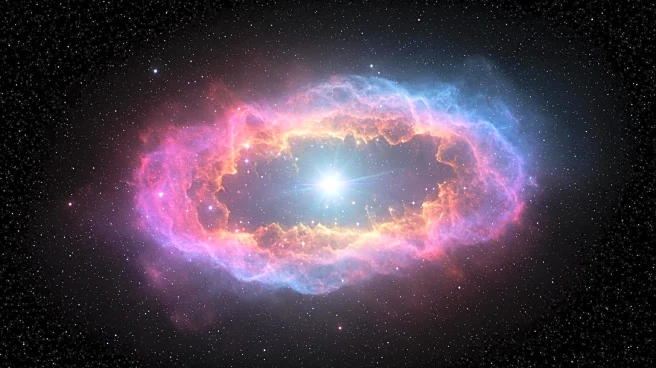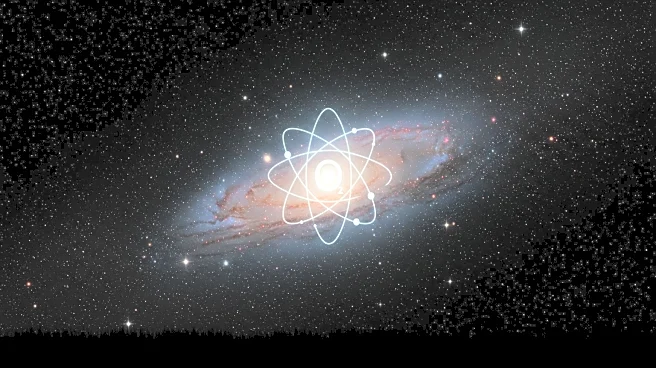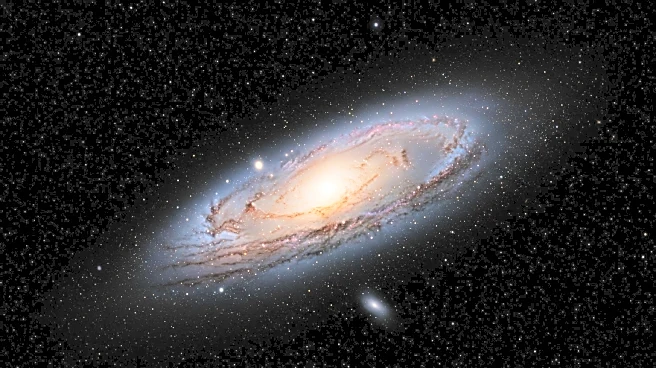What is the story about?
What's Happening?
Researchers have successfully recreated the universe's first molecules by simulating the conditions of the early universe. This groundbreaking study, published in the journal Astronomy and Astrophysics, reveals that helium hydride ions (HeH+) were the first molecules to form after the Big Bang. These ions are crucial for the formation of molecular hydrogen, the most abundant molecule in the universe. The study involved cooling helium hydride ions to extremely low temperatures and observing their reactions with heavy hydrogen. Contrary to previous theories, the reaction rates did not decrease at lower temperatures, suggesting that these ions played a more significant role in early star formation than previously thought.
Why It's Important?
This discovery has profound implications for our understanding of the early universe and the formation of stars. Helium hydride ions, by facilitating molecular hydrogen formation, were integral to the development of the first stars. The findings challenge existing theories about the chemical processes in the early universe, suggesting that these ions were more influential than previously believed. This could lead to a reassessment of helium chemistry and the conditions that led to star formation, impacting fields such as astrophysics and cosmology. The study provides new insights into the fundamental processes that shaped the universe as we know it.
What's Next?
The research opens new avenues for further exploration into the chemical dynamics of the early universe. Scientists may conduct additional experiments to explore other potential reactions and their implications for star formation. The findings could prompt a reevaluation of existing models of the early universe, potentially leading to new theories about the origins of stars and galaxies. Researchers may also investigate the role of other molecules in early cosmic chemistry, further expanding our understanding of the universe's formative years.
Beyond the Headlines
The study highlights the importance of revisiting established scientific theories with new experimental data. It underscores the dynamic nature of scientific inquiry, where new findings can significantly alter our understanding of fundamental processes. The research also emphasizes the role of advanced technology in simulating and studying conditions that are otherwise inaccessible, showcasing the potential for future discoveries in astrophysics.
AI Generated Content
Do you find this article useful?


